Malayali weddings are utterly devoid of all the pomp and fanfare that mark lavish Punjabi / Sikh/Bania weddings. These are summed up as Band Baaja Baraati. At a Malayali wedding there is neither loud music nor dancing, no mehendi, and sangeet, which are almost Sine Qua Non for weddings in northern parts of the country, says Ruchira, in the weekly column, exclusively for Different Truths.
Having lived in a multicultural society like India, I have had the opportunity to attend a few Malayali weddings. And I find them interesting too. Contrary to the much-hyped ‘Big fat Indian wedding’, encompassing a series of customs and ceremonies, a typical traditional Hindu Malayali wedding is very simple and brief. Though there are no elaborate rituals yet the ceremony does not fail to impress the onlookers. Let’s take a look.
In sharp contrast with the north/east Indian weddings, which are mandatorily held after dusk, Malayali weddings invariably take place in the morning. The reason may be ascribed to the fact that people of the four south Indian states are of ‘Dravidian’ origin. For Dravidian people, the post-sunrise hours are considered to be auspicious, since their race traces its origin to the Sun god.
Malayali weddings are utterly devoid of all the pomp and fanfare that mark lavish Punjabi / Sikh/Bania weddings. These are summed up as Band Baaja Baraati. Incidentally, nowadays we observe that these features are being increasingly adopted by people of other states also. At a Malayali wedding, there is neither loud music and dancing nor mehendi and sangeet which are almost Sine Qua Non for weddings in northern parts of the country. A short time before a wedding, the muhurtham (auspicious moment) and date for the engagement and wedding are settled by the two families.
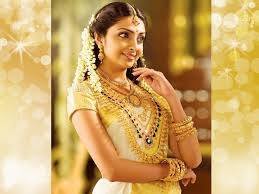 During the engagement ceremony, the nishchaya thaamboolam (a sacred thaali) are exchanged by the prospective bride and the groom’s parents. However, one outstanding feature of Malayali wedding is the amount of gold jewellery which the bride wears. So, you can see numerous chains, necklaces bangles, bracelets, headpieces and so on. In fact, Malayali weddings are famous for the amount of gold that is visible on the bride’s figure. This custom may be ascribed to the fact that centuries ago Kerala had a matrilineal society. Accordingly, the newly-wed bride occupied an important position right after the eldest female member of her new family. Therefore, upon entering the new house, she assumed the responsibility of her husband’s finances. The gold she wore was her contribution to the household.
During the engagement ceremony, the nishchaya thaamboolam (a sacred thaali) are exchanged by the prospective bride and the groom’s parents. However, one outstanding feature of Malayali wedding is the amount of gold jewellery which the bride wears. So, you can see numerous chains, necklaces bangles, bracelets, headpieces and so on. In fact, Malayali weddings are famous for the amount of gold that is visible on the bride’s figure. This custom may be ascribed to the fact that centuries ago Kerala had a matrilineal society. Accordingly, the newly-wed bride occupied an important position right after the eldest female member of her new family. Therefore, upon entering the new house, she assumed the responsibility of her husband’s finances. The gold she wore was her contribution to the household.
Prior to the wedding, the bride and groom-to-be seek blessings from their elderly family members, by touching their feet. The actual wedding ceremony takes place preferably at the bride’s ancestral home or any venue like mandapam or in a temple. The first thing that you will notice at a Malayali wedding ceremony is the orderly and peaceful ambiance. The bride walks into the hall accompanied by her female relatives (aunts and sisters), each of them carrying lit lamps in their hands. The groom arrives at the site in a similar fashion. Malayali weddings can happen without priests. There is usually no priest, nor fire worship (Homam) unless the function takes place in a temple.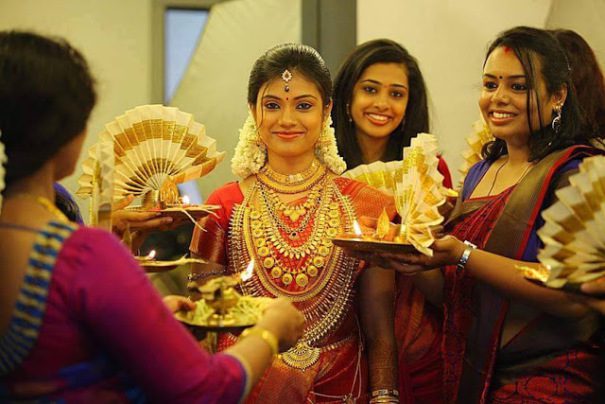
Nowadays, the wedding takes place on a stage decorated with lamps and flowers. There is always a para or a vessel made of brass and copper, filled with nellu (unhusked rice grains). Once the duo is seated, the boy’s parents will bring a taali (mangalsutra), which consists of a simple gold chain with a leaf-like pendant. The boy ties it around the girl’s neck. Then, garlands are exchanged. About this time, the girl’s father holds her hand and gives it to the boy. This symbolises handing over the girl to the boy’s family. Thereafter, the groom holds the girl’s hand, and together they go around the stage three times, thus signaling the finale of the wedding.
Now, it is time for the newly-weds to receive blessings from the oldest members of the family. The wedding ceremony is usually over by lunchtime. The guests are then served an elaborate 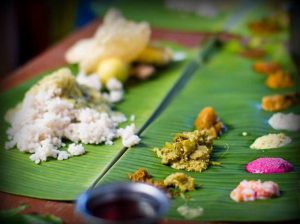 wedding sadyam (feast). The menu consists of parboiled pink rice, side dishes, savouries, pickles, and desserts spread out on a plantain leaf. It is customary to place the tapering end of the leaf to the left of the guest while he is seated. The first dish to be served is Parippu, a liquid curry made of small gram and ghee. The second course is Sambar and Avial, a mixture of vegetables, coconut paste, and green chillies. Other important dishes include thoran and olan. The savouries include upperi, pappadam, pickle, pachchadi, etc.Desserts are served mid-way through the meal. The payasam is a thick fluid dish of sweet brown molasses, coconut milk, and spices, garnished with cashew nuts and raisins. Pazham, a ripe golden yellow plantain, is usually eaten with the spicy rasam. Kaalan or seasoned buttermilk is served at the end of the feast. A trifle baffling, though Malayalis are largely nonvegetarian, yet their wedding fare is utterly devoid of any non-vegetarian items. The Malayali post-wedding ritual involves grihapravesham i.e., the bride’s entry into her new home. This is marked by endless feasting in the days that follow.
wedding sadyam (feast). The menu consists of parboiled pink rice, side dishes, savouries, pickles, and desserts spread out on a plantain leaf. It is customary to place the tapering end of the leaf to the left of the guest while he is seated. The first dish to be served is Parippu, a liquid curry made of small gram and ghee. The second course is Sambar and Avial, a mixture of vegetables, coconut paste, and green chillies. Other important dishes include thoran and olan. The savouries include upperi, pappadam, pickle, pachchadi, etc.Desserts are served mid-way through the meal. The payasam is a thick fluid dish of sweet brown molasses, coconut milk, and spices, garnished with cashew nuts and raisins. Pazham, a ripe golden yellow plantain, is usually eaten with the spicy rasam. Kaalan or seasoned buttermilk is served at the end of the feast. A trifle baffling, though Malayalis are largely nonvegetarian, yet their wedding fare is utterly devoid of any non-vegetarian items. The Malayali post-wedding ritual involves grihapravesham i.e., the bride’s entry into her new home. This is marked by endless feasting in the days that follow.
©Ruchira Adhikari Ghosh
Photos from the Internet
#MalayaliWeddings #TypesOfHinduWeddingInIndia #IndianWedding #LowKeyIndianWeddings #SouthIndianWedding #RitualsOfMlayaliWeddings #SliceOfLife #DifferentTruths

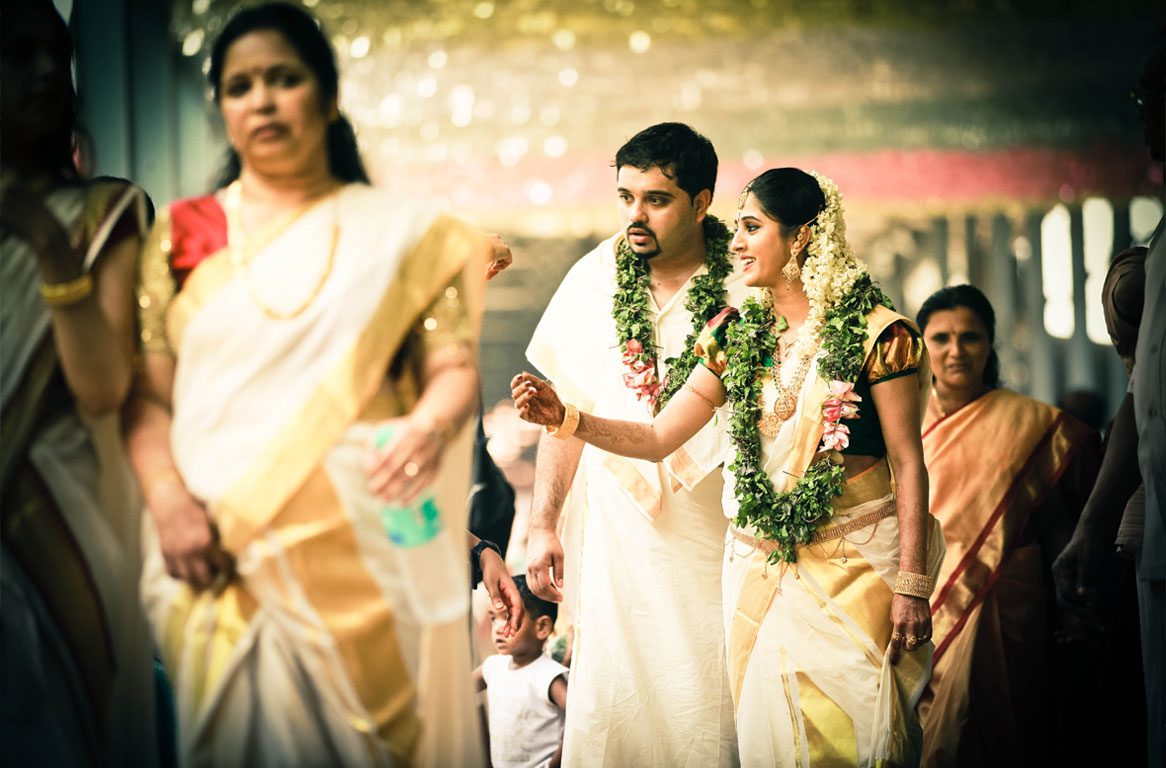
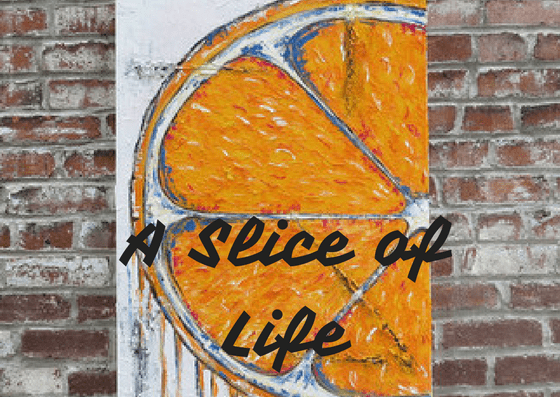



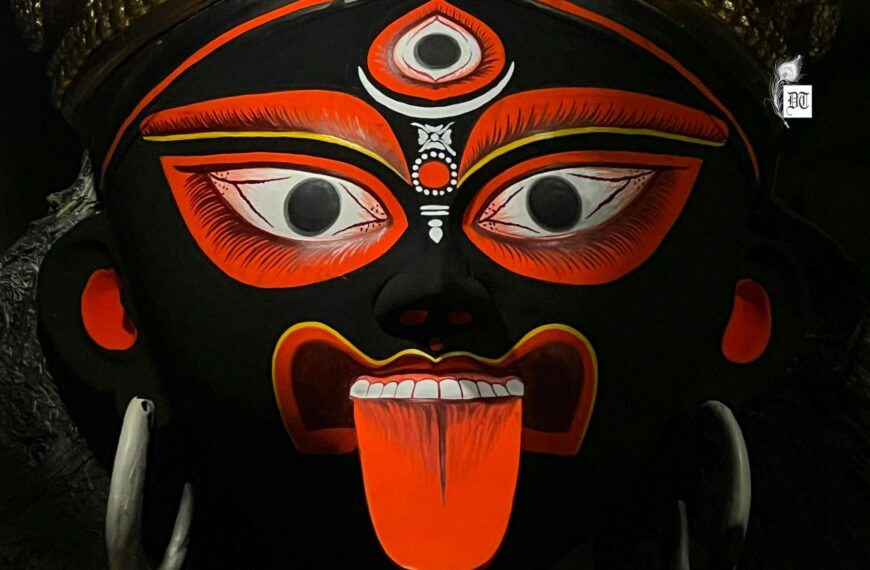
 By
By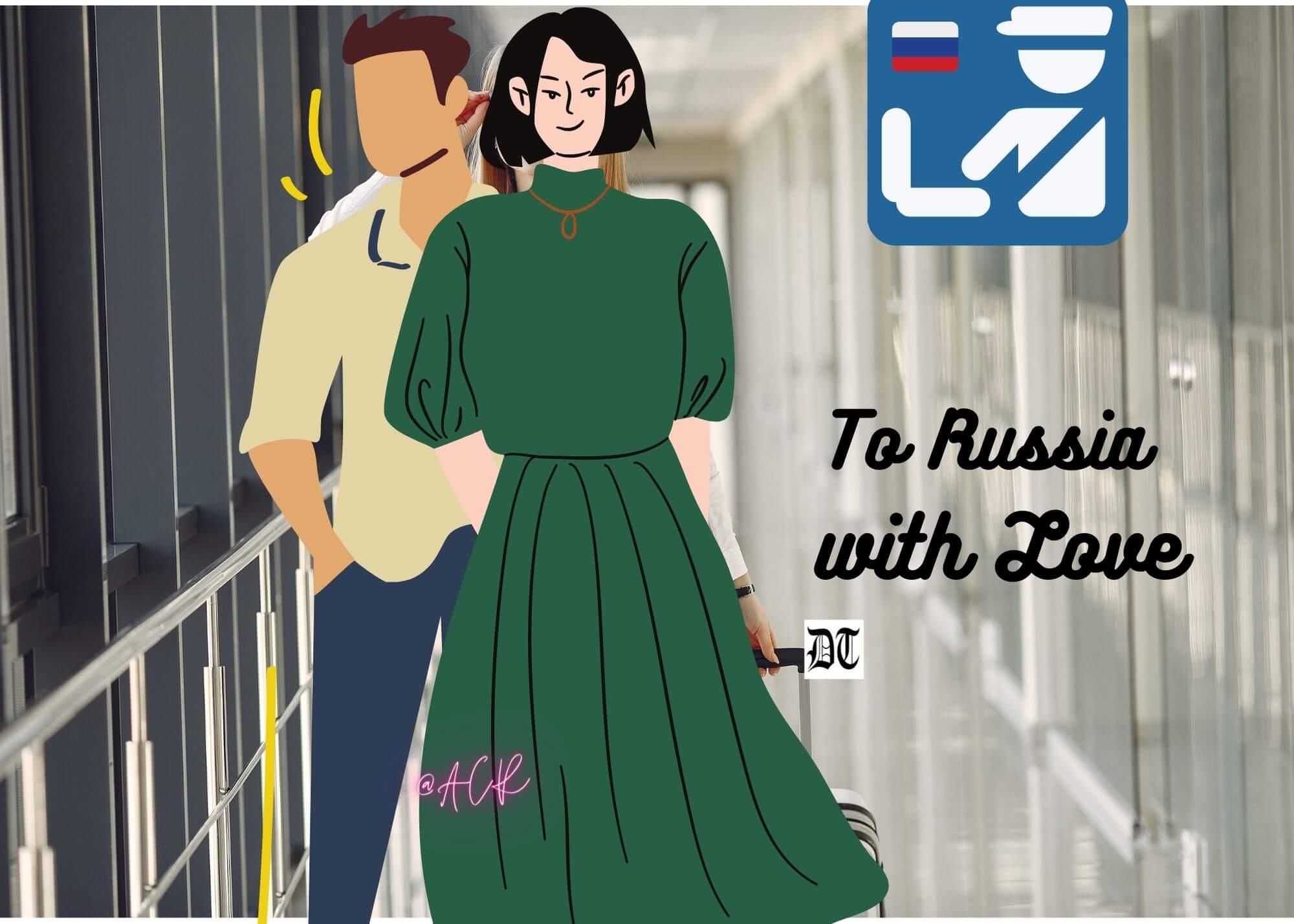
 By
By

We are ie the Nairs are still matrilineal by custom.Our girls do not take charge of anything let alone the finances of our husband’s homes as they still continue to belong to their own homes.Nor does the father of the bride place the girls hand in the boys at the time of the wedding.Like everything else these days malayali weddings are also being punjabi-ised 🙂 hence such variations. Nair children continue to carry the initials of their mother’s n not their fathers
Aplogies Ms Menon . Most of the info was garnered from the internet .Another source was Pillai family I happen to be acquainted with. I agree with you totallay that most regional weddings are getting heavily Punjabiised thanks to tv serials